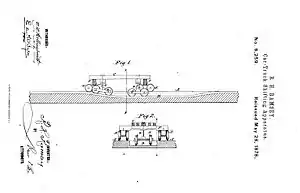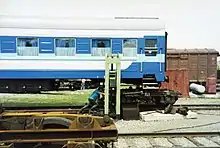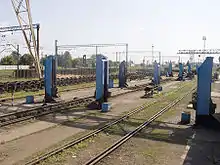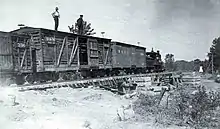| By transport mode | ||||||||||||||||||||||||||||||||||||||||||||||||||||||||||||||||||||||||||||||||||||||||||||||||||||||||||||||||
|---|---|---|---|---|---|---|---|---|---|---|---|---|---|---|---|---|---|---|---|---|---|---|---|---|---|---|---|---|---|---|---|---|---|---|---|---|---|---|---|---|---|---|---|---|---|---|---|---|---|---|---|---|---|---|---|---|---|---|---|---|---|---|---|---|---|---|---|---|---|---|---|---|---|---|---|---|---|---|---|---|---|---|---|---|---|---|---|---|---|---|---|---|---|---|---|---|---|---|---|---|---|---|---|---|---|---|---|---|---|---|---|---|
| By size (list) | ||||||||||||||||||||||||||||||||||||||||||||||||||||||||||||||||||||||||||||||||||||||||||||||||||||||||||||||||
| ||||||||||||||||||||||||||||||||||||||||||||||||||||||||||||||||||||||||||||||||||||||||||||||||||||||||||||||||
| Change of gauge | ||||||||||||||||||||||||||||||||||||||||||||||||||||||||||||||||||||||||||||||||||||||||||||||||||||||||||||||||
| By location | ||||||||||||||||||||||||||||||||||||||||||||||||||||||||||||||||||||||||||||||||||||||||||||||||||||||||||||||||
 | ||||||||||||||||||||||||||||||||||||||||||||||||||||||||||||||||||||||||||||||||||||||||||||||||||||||||||||||||

Bogie exchange is a system for operating railway wagons on two or more gauges to overcome difference in the track gauge. To perform a bogie exchange, a car is converted from one gauge to another by removing the bogies or trucks (the chassis containing the wheels and axles of the car), and installing a new bogie with differently spaced wheels. It is generally limited to wagons and carriages, though the bogies on diesel locomotives can be exchanged if enough time is available.


Wagons and carriages
Bogie wagons can have their gauge changed by lifting them off one set of bogies and putting them back down again on another set of bogies. The pin that centres the bogies and the hoses and fittings for the brakes must be compatible. A generous supply of bogies of each gauge is needed to accommodate the ebb and flow of traffic. The bogies and wagons also need to have standardized hooks, etc., where they may be efficiently lifted. The two wheel sets on four-wheel wagons can be changed as well if the wagon has been designed accordingly.
Engines
Steam
Steam locomotives can be designed for more than one gauge, by having, for example, reversible wheel hubs that suit two alternative gauges. This was done in the 1930s and beyond in Victoria for possible gauge conversion, though no engines were ever converted in this manner other than one heritage engine (R766). Some 1,000 mm (3 ft 3+3⁄8 in) metre gauge Garratt locomotives of East Africa were designed for easy conversion to 3 ft 6 in (1,067 mm) gauge, though again none ever was.
In 1944, the LMS re-gauged a pair of "Jinty" 0-6-0 tank locomotives – originally built to UK 4 ft 8+1⁄2 in (1,435 mm) standard gauge – for use on its 5 ft 3 in (1,600 mm) gauge Northern Counties Committee (NCC) lines in Northern Ireland; re-designated as Class Y, they largely undertook shunting work on dockyard lines in Belfast. The re-gauging was performed by simply reversing the wheel centres so that the spokes dished outwards.
In the southern United States, some steam locomotives built by Baldwin were designed for easy conversion from 5 ft (1,524 mm) to 4 ft 8+1⁄2 in (1,435 mm) standard gauge.
Diesel
Diesel locomotives have bogies like wagons and carriages, only with more cables for the traction motors and take a little longer to convert. In Australia, some classes of diesel locomotives are regularly gauge-converted to suit traffic requirements on the 1,435 mm (4 ft 8+1⁄2 in), 1,600 mm (5 ft 3 in), and 1,067 mm (3 ft 6 in) networks.
Since the 1,067 mm (3 ft 6 in) networks are not all connected to each other, being separated by deserts or lines of other gauges, they are bogie-exchanged or piggybacked on road or rail vehicles when transferred between these networks.
Raising or lowering
Raise
The simplest way to carry out bogie exchange is to lift the wagons off the bogies and replace them back on new bogies. This may require the wagons in a train to be uncoupled, and continuous brakes disconnected. If the wagons are swung out of the way by an overhead hoist, they may sway, which wastes time settling them down.
The Nutter hoist, patented in 1871, used screw jacks to lift cars off of their bogies.[1] The Imboden railway-car lifter, from 1875, used a steam cylinder to wedge the car into the air.[2]
Lower
Another way of carrying out bogie exchange is to lower the bogies onto a trolley in a pit, after which the trolleys are rolled out of the way and others return. This may allow the train couplings and continuous brakes to remain connected. In addition, the bogies never need leave a solid surface, so they can be wheeled in and out more quickly. This method was used at Dry Creek railway station, Adelaide.[3]
Charles Tisdale patented a system of ramps and moving supports for lowering the trucks out from under a railroad car in 1873.[4] George Atkinson patented a hoist and transfer table arrangement in 1882; this dropped the bogies from under a car and shift them to the side.[5] Ramsay's apparatus patented in 1884 used hydraulic jacks to support the car while lowering the track with the bogies out from under it.[6]
National
Australia
Between 1961 and 1995, Australia had five bogie exchange centres, which opened and closed as gauge conversion work proceeded. The gauges served were 1,435 mm (4 ft 8+1⁄2 in) and 1,600 mm (5 ft 3 in), though the 1,067 mm (3 ft 6 in) Queensland did acquire 100 bogie-exchange compatible QLX wagons just in case. All the wagons involved had wagon codes ending in "X", such as VLX.
The centres were:
- Dynon, Melbourne, Victoria
- Wodonga near Albury on state border.
- Port Pirie, South Australia[7]
- Peterborough, South Australia
- Dry Creek, Adelaide, South Australia – the youngest and most modern[8][9][10]
The busiest facility was that at Dynon, in a typical year (1981–82), 24,110 wagons were bogie exchanged, an average of 66 per day. This was done by one shift of 18 men, compared with the 100 men required if the same amount of freight were transferred wagon to wagon.[11]
Belarus

- Brest, Belarus – between 1,520 mm (4 ft 11+27⁄32 in) gauge and 1,435 mm (4 ft 8+1⁄2 in) standard gauge at the border to Poland
Bolivia
Bogie exchange was used between 2 ft 6 in (762 mm) and 1,000 mm (3 ft 3+3⁄8 in) gauge on the Ferrocarril de Antofagasta a Bolivia Railway.
Canada
- Between 1,435 mm (4 ft 8+1⁄2 in) standard gauge and the 3 ft 6 in (1,067 mm) of the former Newfoundland Railway (Terra Transport) at Port aux Basques
China
A bogie exchange station exists at the Chinese border to Mongolia. Both the Moscow-Beijing passenger train (Trans-Siberian) and freight trains get their bogies exchanged. Mongolia has 1,520 mm (4 ft 11+27⁄32 in), China has 1,435 mm (4 ft 8+1⁄2 in) standard gauge. Also, a bogie exchange station was placed farther east at the Russian–Chinese border crossing at Zabaykalsk/Manzhouli. Also, China and ex-soviet countries use the different type coupler (Janney and SA-3). An adapter may be used.[12]
Finland
A bogie exchange station exists in the Port of Turku with a short stretch of 1,435 mm (4 ft 8+1⁄2 in) gauge railway. Freight cars get their bogies exchanged. SeaRail train ferries go from Germany and Sweden. They carry no passenger trains, and passengers must walk to Turku Harbour railway station opposite the ferry terminals. Finland has 1,524 mm (5 ft) broad gauge.
Germany
In 1898 Emil Breidsprecher, a director of the Marienburg–Mława railway and a future professor at the Königliche Technische Hochschule zu Danzig,[13] invented a system that allowed to change wheelsets in wagons that travelled across a break of gauge, without the need to unload them first. In September 1901 a facility was installed at the then German-Russian border at Iłowo.[14] The system was used until 1914 on some railway border crossings between Russia and states using standard gauge;[15] known locations, in addition to Iłowo, are Łódź (then an industrial centre served by both standard and broad gauge railway lines) and Novoselytsia (then Austrian-Russian border), there were also some small installations to meet local demand. As of 1938, the sole facility operated at Zdolbuniv at the then Polish-Soviet border.[16]
A bogie exchange station in the port of Mukran serves train ferries that go to and from Russia, Latvia, and Lithuania, which have 1,520 mm (4 ft 11+27⁄32 in) broad gauge.
Iran

 Jolfa – c. 1950, between 1,435 mm (4 ft 8+1⁄2 in) and 1,520 mm (4 ft 11+27⁄32 in) (Russian gauge)
Jolfa – c. 1950, between 1,435 mm (4 ft 8+1⁄2 in) and 1,520 mm (4 ft 11+27⁄32 in) (Russian gauge)
 Sarakhs – c. 1990, between 1,435 mm (4 ft 8+1⁄2 in) and 1,520 mm (4 ft 11+27⁄32 in) (Russian gauge)
Sarakhs – c. 1990, between 1,435 mm (4 ft 8+1⁄2 in) and 1,520 mm (4 ft 11+27⁄32 in) (Russian gauge)
 Zahedan – 2009, between 1,435 mm (4 ft 8+1⁄2 in) and 1,676 mm (5 ft 6 in) (Indian gauge)
Zahedan – 2009, between 1,435 mm (4 ft 8+1⁄2 in) and 1,676 mm (5 ft 6 in) (Indian gauge)
 Baku – 2012, To be developed in Amirabad port, Caspian Sea, between 1,435 mm (4 ft 8+1⁄2 in) and 1,520 mm (4 ft 11+27⁄32 in) (Russian gauge)
Baku – 2012, To be developed in Amirabad port, Caspian Sea, between 1,435 mm (4 ft 8+1⁄2 in) and 1,520 mm (4 ft 11+27⁄32 in) (Russian gauge)
Kazakhstan
 Druzhba, KZ –
Druzhba, KZ –  Alashankou, CN between 1,520 mm (4 ft 11+27⁄32 in) and 1,435 mm (4 ft 8+1⁄2 in).
Alashankou, CN between 1,520 mm (4 ft 11+27⁄32 in) and 1,435 mm (4 ft 8+1⁄2 in).
Moldova
North Korea
- Tumangan, North Korea – between 1,435 mm (4 ft 8+1⁄2 in) and 1,520 mm (4 ft 11+27⁄32 in) (Russian gauge) at the border to Russia.
The bogies of the direct sleeping car Moscow – Pyongyang, which runs twice monthly, are exchanged there.[17]
Peru
- Between 1,435 mm (4 ft 8+1⁄2 in) standard gauge and 3 ft (914 mm) between the Ferrocarril Central Andino and the Ferrocarril Huancayo - Huancavelica, including locomotives The latter is now 1,435 mm (4 ft 8+1⁄2 in). This change was completed by October 2010.[18]
Romania

 Vadul Siret between 1,435 mm (4 ft 8+1⁄2 in) and 1,520 mm (4 ft 11+27⁄32 in) at the border with Ukraine.
Vadul Siret between 1,435 mm (4 ft 8+1⁄2 in) and 1,520 mm (4 ft 11+27⁄32 in) at the border with Ukraine.
 Halmeu between 1,435 mm (4 ft 8+1⁄2 in) and 1,520 mm (4 ft 11+27⁄32 in) at the border with Ukraine.
Halmeu between 1,435 mm (4 ft 8+1⁄2 in) and 1,520 mm (4 ft 11+27⁄32 in) at the border with Ukraine.
 Ungheni between 1,435 mm (4 ft 8+1⁄2 in) and 1,520 mm (4 ft 11+27⁄32 in) at the border with Moldova.
Ungheni between 1,435 mm (4 ft 8+1⁄2 in) and 1,520 mm (4 ft 11+27⁄32 in) at the border with Moldova.
Russia

 Zabaikalsk (450 km from Chita) with China
Zabaikalsk (450 km from Chita) with China
 Grodekovo (116 km from Ussuriisk and 224 km from Vladivostok) with China
Grodekovo (116 km from Ussuriisk and 224 km from Vladivostok) with China
 Khasan - North Korea (315 km from Vladivostok).
Khasan - North Korea (315 km from Vladivostok). Kholmsk, Sakhalin Island. The bogie exchange is necessary to enable Russian mainland cars to run on the Sakhalin railways, which use the 3 ft 6 in (1,067 mm) gauge.[19]
Kholmsk, Sakhalin Island. The bogie exchange is necessary to enable Russian mainland cars to run on the Sakhalin railways, which use the 3 ft 6 in (1,067 mm) gauge.[19]
 Kaliningrad
Kaliningrad
Spain

- At

 Irun, between 1,435 mm (4 ft 8+1⁄2 in) standard gauge and 1,668 mm (5 ft 5+21⁄32 in) Iberian gauge
Irun, between 1,435 mm (4 ft 8+1⁄2 in) standard gauge and 1,668 mm (5 ft 5+21⁄32 in) Iberian gauge - At

 Portbou, between 1,435 mm (4 ft 8+1⁄2 in) and 1,668 mm (5 ft 5+21⁄32 in)
Portbou, between 1,435 mm (4 ft 8+1⁄2 in) and 1,668 mm (5 ft 5+21⁄32 in)
Tunisia
- Between 1,435 mm (4 ft 8+1⁄2 in) standard gauge and 1,000 mm (3 ft 3+3⁄8 in) metre gauge, including locomotives
Ukraine


 Chop (respectively Mukachevo since 2018) between 1,520 mm (4 ft 11+27⁄32 in) (Russian gauge) and 1,435 mm (4 ft 8+1⁄2 in) at the border to Hungary and Slovakia.
Chop (respectively Mukachevo since 2018) between 1,520 mm (4 ft 11+27⁄32 in) (Russian gauge) and 1,435 mm (4 ft 8+1⁄2 in) at the border to Hungary and Slovakia.
 Jagodin between 1,520 mm (4 ft 11+27⁄32 in) (Russian gauge) and 1,435 mm (4 ft 8+1⁄2 in) at the border to Poland.
Jagodin between 1,520 mm (4 ft 11+27⁄32 in) (Russian gauge) and 1,435 mm (4 ft 8+1⁄2 in) at the border to Poland.
 Mostyska between 1,520 mm (4 ft 11+27⁄32 in) (Russian gauge) and 1,435 mm (4 ft 8+1⁄2 in) at the border to Poland.
Mostyska between 1,520 mm (4 ft 11+27⁄32 in) (Russian gauge) and 1,435 mm (4 ft 8+1⁄2 in) at the border to Poland.
United States

- The Burlington and Northwestern Railway used an unknown hoist in the 1890s to run standard gauge cars on narrow gauge trucks.[20]
- The Cairo and Fulton Railroad (5-foot gauge) used a Nutter hoist at Texarkana in the 1870s to exchange with standard gauge lines.[21]
- The Denver and Rio Grande Western Railroad also used an unknown hoist in the 1890s to run standard gauge cars on narrow gauge trucks.[20]
- The East Broad Top used their timber-transfer hoist in the 1930s to shift standard gauge cars onto narrow gauge trucks.[22] In the early 2020's the heritage operation restoring the railroad, announced their intent to acquire several period appropriate standard gauge cars to regauge to represent the practice in photo charters.[23]
- The Erie Railway used a Nutter hoist at Urbana, Ohio to interchange between 6 ft (1,829 mm) and standard gauge from 1871 until no later than 1878.[24]
- The Illinois Central Railroad used a Nutter hoist at Cairo, Illinois to interchange between its standard gauge equipment with the 5 ft (1,524 mm) of the Mississippi Central from 1874 until the standardization of the latter.[25]

 The standard-gauge International–Great Northern Railroad and the narrow-gauge National Railroad of Mexico used an unknown hoist at Laredo, Texas in the 1890s to exchange trucks to permit through traffic.[26]
The standard-gauge International–Great Northern Railroad and the narrow-gauge National Railroad of Mexico used an unknown hoist at Laredo, Texas in the 1890s to exchange trucks to permit through traffic.[26]- The Sedalia, Warsaw and South Western Railway used an unknown hoist in the 1890s to run standard gauge cars on narrow gauge trucks as well. The accepted practice was to couple standard gauge cars immediately behind the engine, ahead of any narrow gauge cars in the train.[20]
- The Virginia Midland Railway and the Richmond and Danville Railroad installed two Nutter car hoists in north Danville, Virginia in 1882 to deal with the break of gauge between those lines.[27]
- The Bradford, Bordell and Kinzua Railroad (later part of the Pittsburgh and Western Railroad) used an unknown hoist in the 1890s to interchange between 3 ft (914 mm) and standard gauge.[28]
Transfer time
Bogie exchange conversion times were:
- Dynon, Australia – one rail car every 7.3 minutes
- Brest – one rail car takes less than 1 hour[29]
- Zabaykalsk – one rail car takes 5–6 hours
- Erenhot – one rail car takes 5–6 hours
- Cairo, Illinois – in 1874, 16-18 freight cars per hour (2 at a time), 15 minutes per Pullman car[25][24]
Variable gauge axles
Variable-gauge axles in an automatic track gauge changeover system (ATGCS) is a newer development and is faster than bogie exchange. The SUW 2000 ATGCS requires a changeover track about 20 metres (66 ft) long, with a shed if snow is around compared to a small marshalling yard required by bogie exchange.
Axle exchange
An alternative to variable gauge axles and bogie exchange is wheelset exchange.
See also
References
- ↑ Grafton T. Nutter, Improvement in Apparatus for Lifting Locomotives, Trucks, and Railroad Cars, U.S. Patent 114,328, issued May 2, 1871.
- ↑ John D. Imboden, Improvement in Railway-Car Lifters, U.S. Patent 170,374, issued Sept. 25, 1875.
- ↑ Catch Point - November 2007 - p35 - picture of lowering method
- ↑ Charles D. Tisdale, Improvement in Connecting and Disconnecting Car-Bodies and Trucks, U.S. Patent 139,835, issued June 10, 1873.
- ↑ George W. Atkinson, Apparatus for Changing Car-Trucks, U.S. Patent 265,366, issued Oct. 3, 1882.
- ↑ Robert H. Ramsey, Car and Freight Transfer Apparatus, U.S. Patent 304,562, issued Sept. 2, 1884.
- ↑ Bureau of Transport Economics (1977-02-02). A Study of Port Pirie Bogie Exchange (Report). Australian Government Publishing Service. Retrieved 2022-11-11.
- ↑ "Railway Gauges" (TXT). TrainWeb. Archived from the original on 2021-03-01. Retrieved 2022-11-11.
- ↑ "Ian Patterson & Partners: About". Archived from the original on 2008-07-18. Retrieved 2022-11-11.
- ↑ Australian Academy of Technological Sciences and Engineering (1988). Technology in Australia 1788–1988. Australian Science and Technology Heritage Centre. p. 477. ISBN 0908029497. Retrieved 2022-11-11.
- ↑ Lee, Robert (2007-08-01). The Railways of Victoria 1854–2004. Melbourne University Publishing Ltd. p. 224. ISBN 9780522851342.
- ↑ US patent 4102459, Schelle, Axel & Nell, Kuno, "Adaptor device for coupling railway vehicles having different types of couplers", issued 1978-07-25, assigned to Knorr-Bremse GmbH
- ↑ Jerzyło, Patrycja, ed. (October 2016). Księga Jubileuszowa z okazji 10-lecia kształcenia na kierunku Transport (PDF) (in Polish). Gdańsk: Fundacja Rozwoju Inżynierii Lądowej. p. 66. ISBN 978-83-922034-7-6.
- ↑ "Urządzenie do przestawiania wozów kolejowych z torów o szerokości normalnej na tory szerokie (rossyjskie) i odwrotnie, bez przeładowywania towarów" [Device to change railway wagons from standard gauge to broad (Russian) gauge tracks and back, without unloading]. Przegląd Techniczny (in Polish). XL (43): 521–524. 23 October 1902 – via BCPW (Warsaw University of Technology Central Library).
- ↑ Wasiutyński, Aleksander (1925). Drogi żelazne [Railways] (in Polish) (2nd ed.). Warsaw: Komisja Wydawnicza T-wa Bratniej Pomocy Studentów Politechniki Warszawskiej. p. 170 – via BCPW (Warsaw University of Technology Central Library).
- ↑ "Breidsprecher break of gauge device" (PDF). Locomotive Magazine and Railway Carriage and Wagon Review. 44 (550): 184–185. 15 June 1938. Archived from the original on 13 August 2021.
- ↑ Helmut (9 March 2013). "36 hours in North Korea without a guide..." Vienna-Pyongyang.Blogspot.com. Retrieved 13 March 2017.
- ↑ Trains (magazine), March 2009, p68
- ↑ Сахалинская узкоколейная железная дорога (The narrow-gauge railways of Sakhalin) Archived 2011-08-26 at the Wayback Machine (in Russian)
- 1 2 3 Minner v. Sedalia, W. & S. W. Ry. Co., The South Western Reporter Vol. 66, West, 1902; pages 1072-1079. For B&NW and D&RGW practice, see page 1075.
- ↑ Frank S. Bond, A Southern Pacific Railroad, in Southwestern Pacific Railroad, , C. E. Ware & Co., 1875; pages 17-20, see page 18 for truck exchange.
- ↑ Kenneth C. Springirth, East Broad Top Railroad, Arcadia, Charleston SC, 2008; page 28.
- ↑ "East Broad Top Prepares for a Big 2021". 26 January 2021.
- 1 2 The Urbana Hoist, American Railroad Journal, Vol. XXXIII, No. 1 (Jan. 6, 1877); page 30.
- 1 2 Edward Vernon, The Decline in Railroad Construction, Editorial, American Railroad Manual New York, 1874; page li.
- ↑ Paul Selev, Our Next-Door Neighbor, The Inland Printer, Vol. VII, No. 7 (April, 1890); page 651.
- ↑ T.M.R. Talcott, Improvements at North Danville, General Manager's Report, Proceedings of the Annual Meeting of the Stockholders of the Virginia Midland Railway Company, Alexandria, 1882; page 58.
- ↑ Titus v. Bradford, Bordell & Kinzua Railroad Company, Lancaster Law Review, Vol. VIII No. 12 (Feb. 16, 1891); pages 93-95.
- ↑ "Train timetable". RW.by. Retrieved 13 March 2017.
External links
 Media related to Manual gauge changing at Wikimedia Commons
Media related to Manual gauge changing at Wikimedia Commons- "TRANSFER OF GAUGE". Sunday Times (Perth). No. 230. Western Australia. 8 June 1902. p. 1 (THE SUNDAY TIMES SUPPLEMENT). Retrieved 18 May 2017 – via National Library of Australia.
